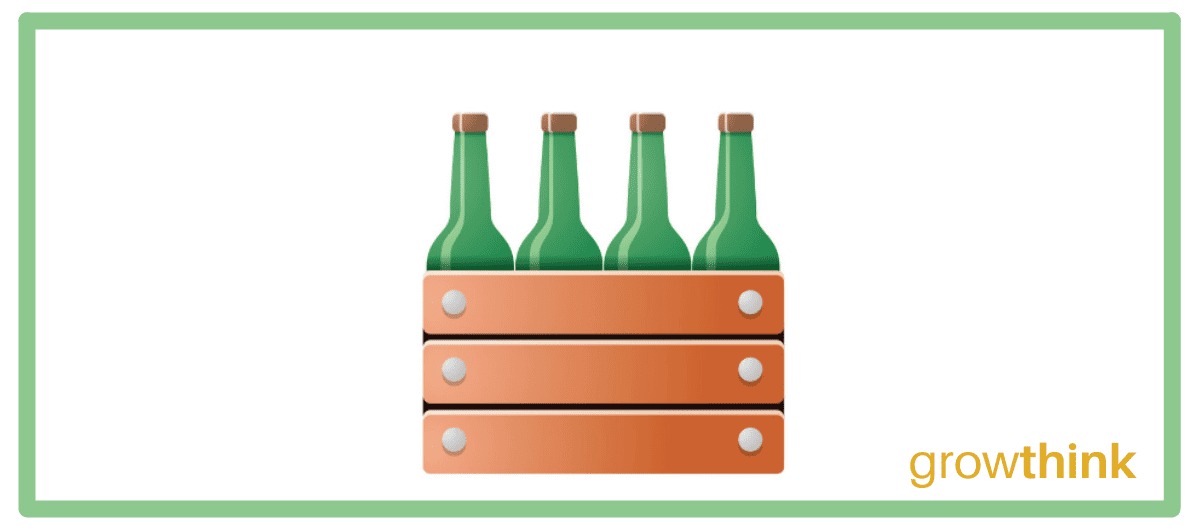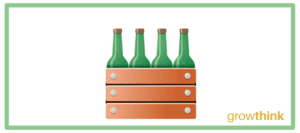
On This Page:
- How to Open a Liquor Store
- How Big is the Liquor Store Industry?
- What are the Key Segments of the Liquor Store Industry?
- What External Factors Affect the Liquor Store Industry?
- Who are the Key Competitors in the Liquor Store Market?
- What are the Key Customer Segments in the Liquor Store Market?
- What are the Typical Startup Costs for a New Liquor Store Business?
- Is Owning a Liquor Store Profitable?
- What are the Keys to Launching a New Liquor Store Business?
- What Marketing Strategies Work Best for a Liquor Store?
- How to Start a Liquor Store FAQs
- Helpful Videos
Below you will learn how to start and run a successful liquor store.
Specifically, we will explore how to get started with owning a liquor store. We’ll cover the steps it takes, how to write a business plan for your store and what liquor licenses are needed. You’ll also learn about the best ways to promote your liquor store and marketing tips for a successful business.
Importantly, a critical step in starting a liquor store is to complete your business plan. To help you out, you should download Growthink’s Ultimate Liquor Store Business Plan Template here.
Steps to Open a Liquor Store
- Write a liquor store business plan to create a roadmap for your new business including market research and a financial plan to determine how much funding you need to get started.
To enhance your planning process, incorporating insights from a sample liquor store business plan can be beneficial. This can provide you with a clearer perspective on industry standards and effective strategies, helping to solidify your own business approach. - Determine whether there are restrictions on where you can open your store and settle the lease agreement for a physical store location.
- Determine the costs of getting connected to utilities such as electricity and water – this will vary depending on location and utility provider.
- Hire enough staff members to run your liquor store for all hours of operation.
- Research potential suppliers for your alcohol inventory and find out what wholesale prices they offer.
- Identify your target market and determine how you’ll advertise to them.
- Decide how much inventory you need to start with and begin ordering supplies, including packaging.
- If applicable, apply for any necessary liquor licensing.
- Get all the required permits approved by the local governing authority.
- Open your business! Offer incentives such as grand opening specials to gain interest from potential customers in your area.
How Big is the Liquor Store Industry?
Last year, the market size of the Beer, Wine & Liquor Stores industry was $71.6 billion US dollars. The industry is expected to increase at an annual rate of 2.8%.
What are the Key Segments of the Liquor Store Market?
The liquor store industry can be broken down into four separate segments:
- Beer Retailing – Beer is the most popular alcoholic beverage in the United States, and liquor store retailers have responded by devoting increasing shelf space to this product.
- Wine Retailing – Wine is the second most popular alcoholic beverage in the United States. Consumer interest in wine has grown, and consequently, retailers have devoted an increasing amount of shelf space to this product.
- Spirits Retailing – Although liquor stores generally devote more shelf space to wine and beer than to other types of alcoholic beverages, spirit sales typically account for a significant percentage of total sales.
- Cider, Mead, and Other Alcoholic Beverage Retailing – Liquor stores also sell a variety of other alcoholic beverages, including cider and mead.
Finish Your Business Plan Today!
If you’d like to quickly and easily complete your business plan, download Growthink’s Ultimate Liquor Store Business Plan Template and complete your plan and financial model in hours.
What External Factors Affect the Liquor Store Market?
Economic Conditions – The demand for alcoholic beverages is typically sensitive to changes in economic conditions. When the economy is strong, consumers have more money to spend on discretionary items, including alcoholic beverages. When the economy is weak, consumers tend to reduce their spending on discretionary items.
Government Regulations – Alcoholic beverage sales are often impacted by changes in the legal restrictions governing their sale. Government regulations can affect the industry in a variety of ways. For example, regulations may restrict the types of alcoholic beverages that may be sold or the hours during which liquor stores may be open.
Social Trends – The demand for alcoholic beverages is also influenced by social trends. For example, the increasing popularity of craft beers and artisanal spirits reflects a trend among consumers toward more unique and specialty products.
What are the Key Customer Segments in the Liquor Store Market?
In the U.S., the primary customer group for liquor stores is adults ages 21 and over, but the amount and location of alcohol purchases they make vary by gender.
Other key customer segments include:
- consumers with a household income of more than $50,000
- individuals between the ages of 21 and 34
Who are the Key Competitors in the Liquor Store Market?
Some of the main competitors in the liquor store business are:
- Other Local Liquor Stores
- Beverage Stores
- Independent Retailers
- Discount Department Stores
- Supermarkets and Grocery Stores
- Convenience Stores
What are the Typical Startup Costs for a New Liquor Store Business?
The typical startup costs to open a liquor store are usually between $50,000 – $250,000. This may include:
- Store Buildout – Customizing your liquor store to your specifications can be costly, although some landlords will pay for that cost in return for you signing a long-term lease.
- Rent – Liquor store locations are often in high-traffic areas with rent prices to match.
- Staff Salaries – Most liquor stores have extended hours, so plan on having more employees or employees working longer hours especially during the holidays.
- Start-up Inventory – Your store will need adequate supplies before opening day.
- Liquor License and Permits – These can be expensive depending on your location.
- Marketing – The more you spend on marketing, the more potential customers there will be at your store.
- Insurance – You will need business insurance, workers’ compensation, and general liability insurance before you even open your doors.
- Operating Supplies & Expenses – This includes everything from pens and paper to marketing materials.
- Additional Funds – You may need a little extra money in case your business takes off unexpectedly or if it hits some bumps along the way.
Is Owning a Liquor Store Profitable?
Yes, owning a liquor store can be very profitable. However, the earnings vary greatly depending on location and price structure.
To help improve the profitability of your liquor store, you should follow the three most important steps:
1. Good Product Selection and Inventory Management:
The supply of liquor must be diversified, which will allow the store to attract a larger number of customers.
2. Being Competitive:
Competition is stiff in this industry so it’s essential that your prices are competitive with other stores in your area. Both price and product selection contribute to the success of your business.
3. Good Customer Service:
A well-trained and knowledgeable staff is a must for any liquor store because good customer service is the key to success in this industry.
All customers care about is finding quality products at low prices so it’s important that you maintain an inventory appropriate to the needs of the local market.
What are the Keys to Launching a New Liquor Store Business?
There are many different things that you have to do in order to launch a Liquor Store. It is important to know what type of Liquor Store you want to open and what your budget is going to be. Create a Liquor Store business plan using the following steps:
- Find a Location – You will need a place that can house all of your products and meet all the requirements for opening a liquor store.
- Select Products – This step involves selecting which alcoholic beverages you’re going to offer. These items should make up at least 60% of your store’s inventory.
- Outline Staffing Requirements – Decide how many hours each employee will work and how much they will earn for those hours.
- Determine Retail Prices – You will need to determine how much each product in your liquor store will cost.
- Market Research – Figure out if there is a market for what you’re selling in your target location.
- Write an Agreement with Your Supplier – Look into terms of payment and shipping when dealing with suppliers.
- Determine Insurance Requirements – Figure out what type of insurance you need and the cost of it.
- Get Licenses and Permits – Make sure you know which licenses and permits are necessary for your Liquor Store.
- Market Yourself – Build a marketing plan for your liquor store. Make sure you are using the platforms where your target market spends most of its time. Showing in local search results is essential for any liquor store.
What Marketing Strategies Work Best for a Liquor Store?
Depending on the vibe of your liquor store, incorporating elements from a well-thought-out liquor store marketing plan may guide you in selecting which strategies to pursue.
You may not want to try all of the marketing strategies below, but here are a couple of ideas to get customers in the door:
- Use social media and online promotions to connect with customers
- Promote the products that best suit your store and that make the most money
- Marketing through events and activities within the store:
- In-store tastings
- In-store cooking with alcohol
- In-store contests
There are also other traditional marketing and merchandising techniques that can help increase the average sale per customer:
- Highlight Exclusives. These are products that aren’t available at other stores.
- Create Ambiance. Use music, lighting, and décor to give your liquor store a certain vibe.
- Make Promotions Visible. This is important in order for customers to know what type of promotions you have going on. If you have window space, use it to lure customers that might be driving or walking by.
- Show Off Merchandise. Enhance the product displays by arranging merchandise attractively.
- Use Promotional Techniques to Drive Sales. Here are just some of them:
- Cash discounts
- Buy one get one free deals
- Price markdowns or sales on selected items
- Giveaways and gifts with purchase
- Offer Delivery. Have an order minimum? Consider offering delivery services where possible.
Liquor Store Business Plan Example PDF
Download our liquor store business plan pdf here. This is a free liquor store business plan example to help you get started on your own liquor store plan.
How to Finish Your Liquor Store Business Plan in 1 Day!
Don’t you wish there was a faster, easier way to finish your liquor store business plan?
With Growthink’s Ultimate Liquor Store Business Plan Template you can finish your plan in just 8 hours or less!
OR, Let Us Develop Your Plan For You
Since 1999, Growthink has developed business plans for thousands of companies who have gone on to achieve tremendous success.
Click here to see how Growthink’s business planning consultants can create your business plan for you.
How to Start a Liquor Store Business FAQs
How Can a Liquor Store Increase Its Market Share?
There are a number of ways liquor stores can increase their market share:
- Increase Product Offerings - Introduce new types of alcoholic beverages to attract consumers looking for variety. For example, premium serving options such as beer in a growler or wine by the glass.
- Increase Customer Satisfaction - Loyalty programs and personalized service can help to distinguish your store from competitors, increasing its market share.
- Boost Your Image - Keep storefronts clean and well-organized and consider promoting happy hour specials to attract new customers looking for convenience.
- Introduce Online Ordering - If you have a liquor store website, allow customers to place their orders online so they can quickly pick up their purchases at your store.
How Have Liquor Stores Responded to Economic Downturns?
Alcohol sales are usually not impacted by economic downturns because consumers tend to drink more when times are tough. Even during recessions, various segments of the alcoholic beverage industry like beer and liquor stores tend to continue to grow.
How are Liquor Stores Faring in a Changing Consumer Environment?
The consumer environment has been changing over the past five years due to the following trends:
- Increased Competition - Large grocery chains have been increasing their alcohol offerings while convenience stores and drugstores now carry some liquor products.
- Increased Consumer Diversity - Demographic changes such as an increase in the median age of the population, as well as greater ethnic and racial diversity, impact how people choose to spend their leisure time and socialize.
- Changing Consumer Purchasing Habits – Consumers are becoming more sophisticated about alcoholic beverages because of the increasing variety available. They are more willing than ever to experiment with new brands and styles, which makes it harder for liquor stores to predict customer preferences.
How Are Liquor Stores Responding to Competition from Online Sales?
Liquor stores are fighting online sales by promoting their physical locations and offering services such as delivery, tasting events, pick-up orders, and loyalty programs.
For example, some stores (in certain states) are partnering with ride-sharing companies like Uber to pick up customers' orders and offering consumers the opportunity to sign up for rewards programs that give them discounts or special offers.
What Are Some Tips for Starting a Successful Liquor Store?
Some tips for starting your own liquor store include:
- Develop a Solid Business Plan - Research your market and location to determine if a liquor store is an ideal business for your area and meet with the landlord and/or zoning board to ensure you're in compliance.
- Hire Employees Who Can Relate To Consumers – Showcase employees who can connect with consumers, especially younger ones. Their knowledge of local events and culture can help attract new customers.
- Make the Store Attractive to Customers - Make sure your store is clean, well-organized, and has ample parking for easy access. Set up a tasting area where customers can sample products before purchasing them.
- Deliver Sales Growth with Liquor Marketing Expertise – Partnering with experts who are familiar with how consumers view alcohol brands can help you stay ahead of competitors.
What are the Options for Funding My Liquor Store?
New business owners should investigate conventional sources of loans, such as small business administration (SBA) loans, a business loan from a bank, and/or private investors.
How to Set the Pricing for a Liquor Store?
The price structure for a liquor store depends on the market, rent costs, and the type of customer you're hoping to attract. For example, if you want to appeal to young customers with less disposable income, selling beer in single cans is more affordable than selling 24-can cases.
Meanwhile, if you're trying to draw wealthier customers who enjoy hosting parties at home or taking bottles of liquor as gifts on trips, selling larger quantities is more profitable.
Is a Liquor Store a Profitable Business?
Liquor stores are profitable businesses in most cases, especially when they are in competitive markets with high demand for their products.
To make your store more profitable, focus on great customer service and providing variety. A liquor store with knowledgeable staff who are able to make recommendations to customers can increase their sales by 20% or more.
What is Considered a Good Profit Margin for a Liquor Store?
In general, a liquor store earns profit margins of about 20% from total revenue.
Where Can I Download a Liquor Store Business Plan PDF?
You can download our liquor store business plan PDF template here. This is a business plan template you can use in PDF format.
Helpful Videos
Liquor Store Business & How Much Can You Make?
Liquor Store Profitability: How to Run a Profitable and Successful Liquor Business
How to Increase Liquor Store Sales: 4 Ways to Boost Your Bottom Line

 Business Plan Template & Guide For Small Businesses
Business Plan Template & Guide For Small Businesses Liquor Store Business Plan
Liquor Store Business Plan Winery Business Plan Template
Winery Business Plan Template